After seeing Prismatic Wasteland's blog post about each creator's individual personal appendix N, I thought I'd jump on the blogwagon and explore some of the media that has inspired me when creating games.
Appendix N
But what exactly is the Appendix N?
In the first edition of the Dungeons and Dragons Dungeon Master's Guide, released in 1979, there was a section at the end of the book titled "Appendix N: Inspirational and Educational Reading". This was a list of various authors, literary series, and books that Gygax said had influenced the creation of the game. This was updated with the release of the fifth edition of the Dungeons and Dragons Player's Handbook in a similar section at the end of the book titled "Appendix E: Inspirational Reading". Most of this list was made up of weird fiction, pulp fantasy and sci-fi from the 70s.
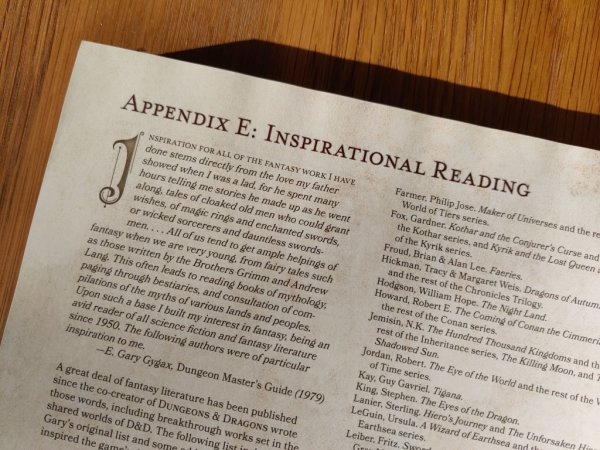
If you're interested in learning more about Appendix N or the works listed there, the blog posts in the series Adventures in Fiction by Goodman Games are a great start, as well as Jeffro Johnson's book Appendix N: The Literary History of Dungeons & Dragons . You can even read some short stories from some of the authors in this list in an anthology titled Appendix N: The Eldritch Roots of Dungeons and Dragons edited by Peter Bebergal.
So then, what would a list of inspiration reading look like for Għar Gremxul? What's my own personal Appendix N?
Maltese Work
Since one of the core pillars for Għar Gremxul is "Games based in Maltese folklore, history, and culture", it should come as no surprise to anyone that various Maltese books in these categories would be a significant influence. Since these books cater to a small market (the population of Malta only numbers around 500,000 after all), some of these may be long out of print and very difficult to find. Furthermore, a significant amount of books in the list are only available in Maltese, which makes them slightly more inaccessible if you don't already know the language.
Maltese Folklore
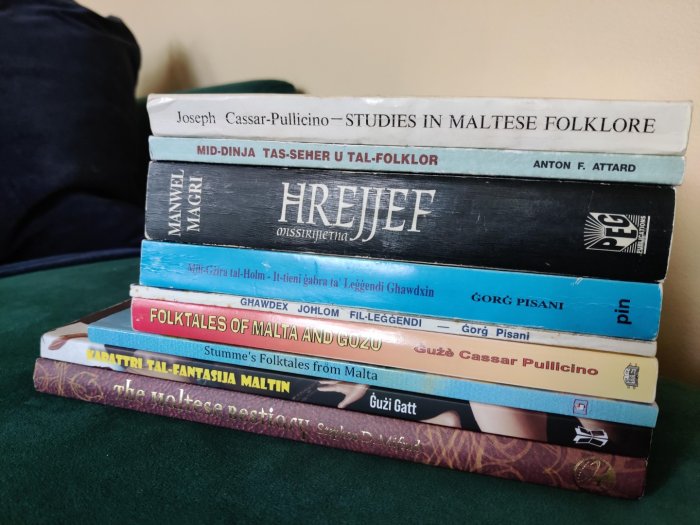
One of my strongest influences is Maltese folklore and folk tales. As I mentioned in a previous blog post, Stephan D. Mifsud's The Maltese Bestiary , published by Merlin Publishers in 2014, is probably the biggest inspiration here and kicked off my renewed interest in Maltese folklore, history, and culture. Mifsud's book explores various different monstrous figures from Maltese myth and folktales, and since then, he has released two other volumes under the title Maltese Mythology which explore more of Malta's myths. If you're interested in the subject, the entire bibliography section at the end of those books is a treasure trove of rabbit holes to go down. In a similar vein to Mifsud's work, Anton F. Attard's Mid-Dinja tas-Seħer u tal-Folklor, published by A & M Printing Ltd. in 2002, also describes various Maltese mythological creatures in a book is aimed towards a younger audience, while Ġużi Gatt's Karattri tal-Fantasija Maltin , published by Midsea Books in 2023, provides a thoroughly researched account of various Maltese folkloristic creatures in a similar vein to his fantastic articles on Il-Miklem.com.
Another key point of inspiration is Manwel Magri's Ħrejjef Missirijietna , particularly the edition edited by folklorist Ġorġ Mifsud Chircop and published by Publishers Enterprises Group in 1994. Magri was a Maltese folklorist and archaeologist who realised that various elements of Maltese folklore were disappearing before his eyes, and strove to collect and document as much as he could before they vanished forever. Unfortunately, his untimely death in Sfax, Tunisia meant that we were robbed of decades of valuable further work by Magri, but which has since been continued by other local folklorists. While there are several versions of Magri's collections of folk tales, Mifsud Chircop's work in Ħrejjef Missirijietna brings this collection into context with various studies on Magri and his background, on Maltese folklore, and on the structure of the folk tales themselves. Other collections of local folk tales and legends include Ġużè Cassar Pullicino's collection of folk tales titled Folktales of Malta and Gozo , published by Malta University Publishers in 2000, as well as Ġorġ Pisani's collections of Gozitan legends titled Għawdex Joħlom fil-Leġġendi , published by Gozo Press in 1980, and Mill-Gżira tal-Ħolm - It-tieni ġabra ta' Leġġendi Għawdxin, published by Pubblikazzjonijiet Indipendenza in 1995.
Having a variety of well-researched local bestiaries and evocative folk tales really allows the reader to conjure up scenes of a fantastical version of the Maltese Islands with scheming sorcerers, faraway lands, and dangerous creatures lurking around every corner.
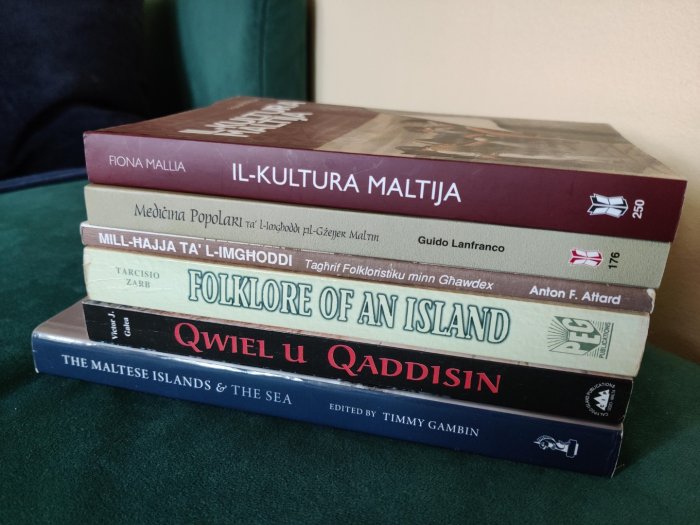
Apart from bestiaries and folk tales, I often find inspiration from various parts of Maltese life are often described in books on local folklore. For general overviews of everyday folklore, I tend to default to Joseph Cassar Pullicino's Studies in Maltese Folklore , published by The University of Malta in 1976, Tarcisio Zarb's Folklore of an Island , published by Publishers Enterprises Group in 1998, and Fiona Mallia's Il-Kultura Maltija , published by Klabb Kotba Maltin in 2012. All three of these books discuss various aspects of folklore related to birth, marriage, and death, as well as local feasts, snajja' or trades, and transport, to name a few examples. Other books tend to be more concerned with specialised subjects such as Victor J. Galea's Qwiel u Qaddisin , published by Calypso Island Publications in 1999, which tackles religious folklore, The Maltese Islands & the Sea edited by Timmy Gambin and published by Midsea Books in 2015, which tackles maritime folklore (among other topics), and Guido Lanfranco's Mediċina Popolari ta' l-Imgħoddi fil-Gżejjer Maltin , published by Klabb Kotba Maltin in 2001, which discusses folk medicine. To me, these books provide a look at what everyday people used to believed, the daily rituals they performed, the food they ate, and their sources of entertainment. As a Maltese person myself, it's also interesting to see which parts are still present today, and which have since been forgotten.
Maltese Language
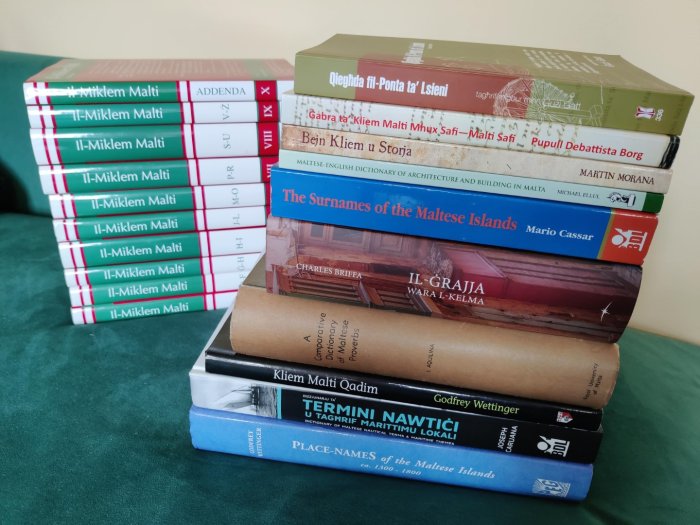
Another influence of mine, and perhaps one that is less obvious in my work, is the Maltese language itself. I really enjoy digging deeper and learning more about the etymology of various words, archaic words that have fallen by the wayside, domain specific words, and place-names. One of my greatest influences here is Erin Serracino-Inglott's 10 volume Maltese to Maltese dictionary Il-Miklem Malti , published by Klabb Kotba Maltin in 1975, a phenomenal publication that provides etymology and definitions of a large amount of Maltese words, including ones that have since fallen out of use.
In the Qiegħda fil-Ponta ta' Lsieni series of books by Ġużi Gatt, published by Klabb Kotba Maltin, the author performs lingustic deep dives in a variety of different topics and domains, again in a similar vein to his fantastic articles on Il-Miklem.com. Charles Briffa's Il-Ġrajja Wara l-Kelma , published by Horizons in 2018, and Martin Morana's Bejn Kliem u Storja , self-published in 2011 and the first in a series of three books, are both encyclopediac works where entries explain the origins of various common and uncommon words in the Maltese language. The latter is a fraction of a large volume of word definitions found on the website Kliem u Storia, and the author even publishes well-researched articles there about a wide variety of other topics.
Pupull Debattista Borg's book Ġabra ta' Kliem Malta Mhux Safi , published by Dom Communications in 2013, is a fascinating look at Maltese words that could be. Here, the author takes words whose origin can be traced from Italian or English, and forms speculative words for them that are instead rooted in Arabic, since Maltese is a Semitic language. While these words might not be in common use by the local population, there's nothing to say that these words couldn't be used in a game and given life there.
In a similar manner, I also really enjoy browsing through books on toponymy, such as Godfrey Wettinger's Place-Names of the Maltese Islands ca. 1300-1800 , published by Publishers Enterprises Group in 2000, and onomastics, such as Mario Cassar's The Surnames of the Maltese Islands , published by Book Distributors Ltd in 2003. I find that having a historian showcase where a place name comes from and reveal more about what the area was like in the past provides lots of inspiration for worldbuilding. Books or dictionaries that deal with specific topics, such as Joseph Caruana's dictionary of local nautical terms Dizzjunarju ta' Termini Nawtiċi u Tagħrif Marittimu Lokali , published by BDL Publishing in 2018, also reveals a panoply of words that the average person does not come across in everyday life, but could be inspiring to use in a different context.
Maltese Literature
I am a firm believer that the best way to properly understand a people is to read their literature. Unfortunately, while I've not done a great job at keeping up with reading Maltese literature, there are definitely a couple of books that continue to sit with me till this day.
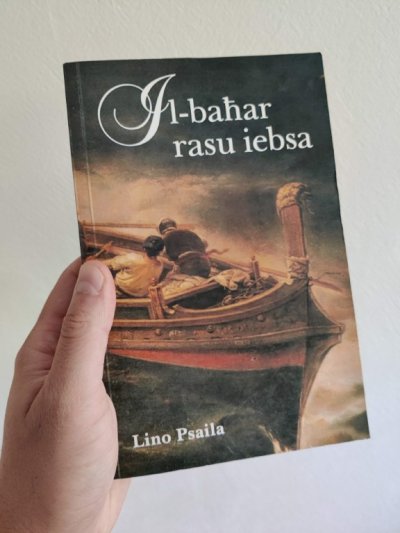
One book that has become a touchpoint of my work is Lino Psaila's Il-Baħar Rasu Iebsa , published by Klabb Kotba Maltin in 2003 and first published in 1978. This book contains a collection of oral tales about real-life fishermen and sailors from the late 19th century and early 20th century that have now been written down. These tales describe fishermen that have encountered storms or other issues while out at sea, celebrating the ones that made it back alive, and commemorating the ones that didn't. There were a number of things that stood out to me in this book; the use of local dialect in the dramatised conversations between sailors, the use of people's nicknames, and finally, the gut-wrenching feeling of people being lost at sea with their families back at shore hoping that their loved ones would make it back alive.
From a fantasy standpoint, I also enjoyed reading Ġorġ Mallia's Ktieb ix-Xwejjaħ , published by Merlin Publishers in 2023 and first published in 1987. This book was considered to be a pioneer in Maltese fantasy, and while reading it, it reminded me a little of Manwel Magri's collected folktales, but updated in different ways. While there aren't many Maltese fantasy and sci-fi books that have been published, the number is increasing every year!
Finally, I want to reference Qawsalla: Antoloġija tal-Letteratura Maltija, an anthology of Maltese prose and poetry edited by Arnold Cassola, Godwin Degabriele, Manwel Mifsud, Paul Pace, and Arthur Sammut that was published by the University of Malta in 1993. Back when I was in secondary school, this was a book that every kid had to read for their Maltese Literature classes. Because of this, I was exposed to various works by prominent local authors that I otherwise wouldn't have had a chance to, and revisiting it now gave me a good starting point to branch off and look for other work by those same authors, and this process might eventually lead me to modern authors.
I think it's important to not only read just fantasy and sci-fi, especially when creating games that tend to fit the fantasy/sci-fi genre, but to also read work from different genres such as speculative fiction and non-fiction, and different types of work such as poetry.
Maltese History
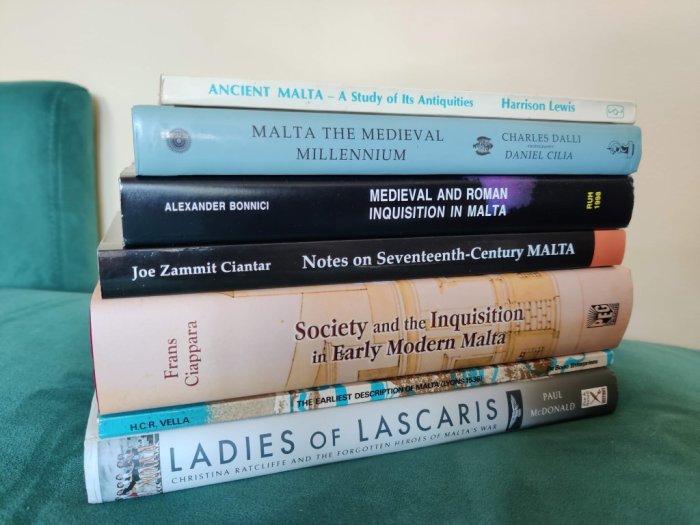
I don't think I can point to one singular book about Maltese history that I consider to be influential to my work. This is because I only tend to dive into the books I need depending on what I'm working on. For example, if I need to read about the World War 2 period in Malta, then I'll pick up books by historians that describe it from the point of view of the British as well as other books that are written memories of what it was like to live through that time.
Ideally, this would work the other way round, and I would read the books beforehand in order to get the creative juices flowing, rather than reading out of necessity. Perhaps that will change in the future.
Lyric Games
In the five years I've been active as Għar Gremxul, I've developed a growing interest in lyric games. Here, I can point to several things that have been influential in this developing interest.
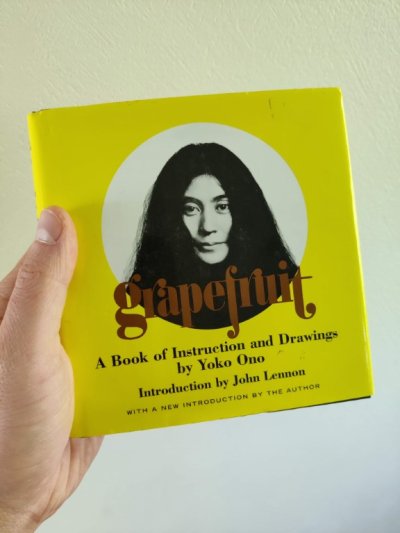
I was first exposed to Pippin Barr's body of work back in 2011, with each video game expressing a small and self-contained lyrical idea. Yoko Ono's Grapefruit, published by Simon & Schuster in 2000 and originally published in 1964, also introduced me to conceptual art.
However, I didn't really learn about the concept of lyric games until I came across Nova aka Idle Cartulary's tweets on Twitter, which are now unfortunately forever lost. Their tweets were essential in allowing me to connect the dots and understand a bit better what lyric games were and what they could be. After stumbling across Kris Green's The Government versus the Trees, which is a Maltese lyric game about the destruction of trees, I dug deeper into the topic by reading Jordan Magnuson's Game Poems: Videogame Design as Lyric Practice, published by Amherst College Press in 2024, and Jon Stone's Dual Wield: The Interplay of Poetry and Video Games, published by De Gruyter Oldenbourg in 2022.
I've also made an attempt to read more poetry (both local and foreign), as well as engage with the body of work of various related art movements such as Fluxus and Art and Language.
Conclusion
I wanted to conclude this blog post with a section from a radio interview in 2004 that Dave Arneson was a part of. There, he says the following:
After having read a few thousand books, I really can’t remember which ones I’ve read anymore… So a lot of it is, Yes, I was inspired by…; but where does the inspiration stop and the game design begin? I mean, you’ve got to make changes. You’ve got to do variations. You can be influenced by something you read and don’t even remember reading, because you want to include “oh here is something neat I can incorporate into my world.
I think this very much applies to how I choose what books to read and what I find influential. Some of the books I described above have stuck with me over the years, but I've read lots of other books that have nothing to do with Malta that I'm sure have influenced me subconsciously in some way. Ultimately, the best way I've found to deal with this is to just read widely in various genres and formats, by various authors coming from various backgrounds and various countries, and you'll inevitably find something that will stick with you.
I hope you've enjoyed getting to know a little bit more about my personal influences! I'd love to hear from you about your own influences in your games.